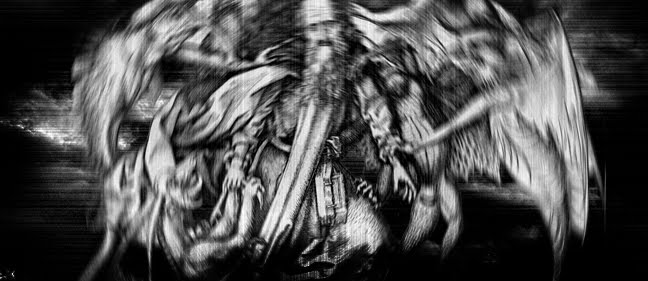
A Guide To Understanding Exotica and its Related Styles
So this guide was started before but accelerated at some of the other users questions regarding content. Most of our beloved Exotica also falls under related styles, specifically Space Age Pop, Lounge and Easy Listening. All of these terms fall under the umbrella concept of "Mood Music" which is inherently music aimed at elevating the listener's mood with a relaxed atmosphere. The concept of mood music mirrors the French phenomenon of "furnishing music" or background music, a concept coined by Eric Satie in 1917, whereby music is intended to recede to the background providing incidental atmosphere. Furnishing music still has its place in the avant guade and contemporary classical yet the concept of incidental music would live throughout the decades.
While Exotica maybe the most recognizable, it is merely a piece in a larger network of light, vintage commercial music. Mood music has continued to be a commercial entity throughout the decades yet its height was arguably during the changing social climate of the 1950's and 60's. Lounge and its varieties was the sound of the old regime, the music of the older generations -- one that would eventually be toppled by Rock & Roll. Today, lounge and its related styles have grown into collectors items mostly due to their rarity and dated qualities. The sounds of old waiting room music sparks a certain nostalgia for a time most people never experienced.
**Light Music**
*1900-1960*
Primary a British style of light orchestral music. Lyndon Jenkins was quoted as saying light music was "original orchestral pieces, often descriptive but in many cases simply three or four minutes of music with an arresting main theme and a contrasting middle section." Mantovani popularized this style of music as having "cascading strings." Light music came before the avant of radio and was the less serious counterpart to classical music. It was used as entertainment music for social gatherings.
**Beautiful Music / Easy Listening**
*(1940s / 1980's) - Present*
Beautiful Music and Easy Listening are essentially the same thing as they are radio formats geared towards a content geared towards a relaxed atmosphere. Taking the format of Light music, **BM/EZ** encases a large variety of styles including lounge, classical, big band and vocal pop. The term "elevator music" or "Muzak" has been applied to the genre as the format was eventually used by the *Muzak Holdings LLC* to be "weather music" for elevators and shopping malls during the 1940's-1960's.
**Lounge**
*1950s-1960's*
The term Lounge is now being considered retrospective as it describes a section of easy listening played within waiting room areas and restaurants during the 1950's and 1960's. Lounge music also combined *easy listening* with *jazz* for a more commercial, non intrusive variety of background music. Lounge singers, which were a continuation of the *big band* have become popular with this style. Lounge music would continue through the century to absorb downtempo and world electronic. The lounge this subreddit has come to enjoy encompasses the early days of lounge
**Exotica**
*1950's-1960's*
Exotica is lounge aimed at the recreation of a Polynesian atmosphere complete with simulated exotic sounds. It was a commercial attempt to offer adventure to middle American audiences. The style of Exotica came during the height of Tiki - a kitsch decoration motif which was popular in restaurants during the 1940's. The thrust of Exotica mirrors pulp fantasy as the cultures presented are fictional, innocuous and complexity absurd. Due to the incredibly politically incorrect attitudes of Exotica, it exists now in a retro style fashion.
**Space Age Pop**
*Early 1960's*
Space Age Pop is Exotica's twin brother. Space Age Pop is lounge aimed at the imaginations of a futuristic society spurred by the excitement of the space race of the early 60's. Instead of the mystic of foreign cultures, Space Age Pop hinged itself on the fantasies of tomorrow. Space Age Pop is also known for utilizing the Stereo Action feature popular in the early 60's. While the concept of Stereo playback may seem trivial by today's standards, producers went bananas with the effect during its inception.
**Mambo / Bossa-Nova / Cha-Cha-Cha / Samba**
1960's-Present
This is a grouping of Latin American styles with were incorporated into lounge during the 1950's and 60's. Each of the above styles were developed in another country and eventually imported into the United States. Some styles remained intact while others were fused with a lounge tempo.
Part of my love for this genre is in fact its popularity rested with the population which would eventually be unpopular. All of these genres are now considered "square" when compared to the revolution brewing underneath. It is fascinating to listen to record with no intellectual framework other than relaxation. While it may seem a strange place to start with a genre of music, Exotica (and its related genres) have a strange yet persistent place in contemporary culture. It is the sound a generation right before everything changed. It was the last cocktail hour before the universe shifted.
